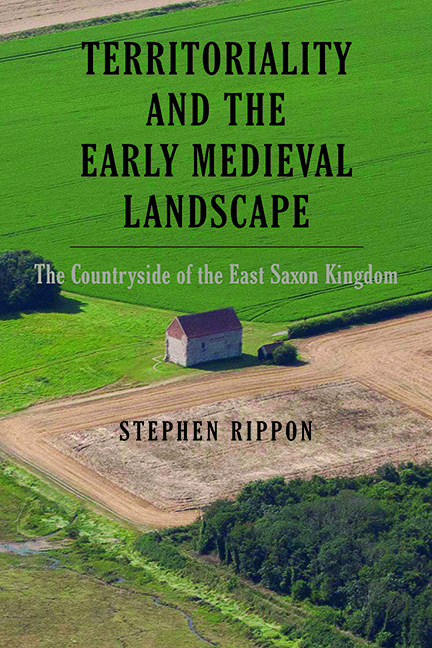Book contents
- Frontmatter
- Dedication
- Contents
- List of Illustrations
- List of tables
- List of Abbreviations
- Acknowledgements
- Glossary
- Preface
- Part I Background
- Part II The Early Folk Territories
- Part III Discussion and Analysis
- Appendix 1 Domesday Population Densities Across the ‘Rochford Peninsula’ Early Folk Territory
- Appendix 2 Sites Used in the Analysis of Animal Bone Assemblages
- Appendix 3 Sites Used in the Analysis of Charred Cereal Assemblages
- Bibliography
- Index
- Garden and Landscape History
Chapter 7 - Fringes of the Kingdom: The Eastern Coastal Districts and the Landscape Context of Anglo-Saxon Colonisation
Published online by Cambridge University Press: 26 May 2022
- Frontmatter
- Dedication
- Contents
- List of Illustrations
- List of tables
- List of Abbreviations
- Acknowledgements
- Glossary
- Preface
- Part I Background
- Part II The Early Folk Territories
- Part III Discussion and Analysis
- Appendix 1 Domesday Population Densities Across the ‘Rochford Peninsula’ Early Folk Territory
- Appendix 2 Sites Used in the Analysis of Animal Bone Assemblages
- Appendix 3 Sites Used in the Analysis of Charred Cereal Assemblages
- Bibliography
- Index
- Garden and Landscape History
Summary
THIS CHAPTER WILL EXAMINE the eastern coastal districts of the East Saxon kingdom, beginning with the possible extent of the Dengie regio that is referred to in a charter of 706×70. These coastal districts comprise three peninsulas with lighter soils (overlying sand, gravel and brickearths) in the eastern coastal areas, heavier soils (overlying London Clay) further inland and gravel-capped hills to the west. All three are bounded by intertidal marshes, estuaries and the North Sea.
THE REGIO CALLED DENGIE
KEY INFORMATION
Possible folk name: Daen(n)ingas
Royal vill(s): ?Maldon or ?Tillingham, and ?Great Baddow
Minster church(s): Ythancaestir, Southminster, ?Maldon and ?Great Baddow
Possible meeting place: Dengie (possible meeting place of Dengie Hundred)
Great estates (into which it fragmented): ?
Area: 337km2
Successor hundreds: Witbrictesherna (Dengie) and part of Chelmsford
The Dengie Peninsula
This is a brief summary of a more detailed discussion in Rippon in press b. In Domesday the area between the Crouch and the Blackwater estuaries was described as Witbrictesherna Hundred (‘Wihtbeorht's corner’), which later became – or reverted to – Dengie (Reaney 1935, 207–8, 213). The earlier folk territory is of particular interest for two reasons: as the site of an important early monastery and because it is documented in a charter of 706×9 whereby King Swæfred of the East Saxons gave Ingwald, bishop of London 70 cassati in the ‘regio called Deningei’ (S.1787; Hart 1971, no. 7). The name Deningei includes the OE element ēġ, meaning ‘island’, and the personal name Dæni (Watts 2004, 183). It is related to the names of the forest of Danegris on the western side of Dengie Hundred and Danbury in the neighbouring Chelmsford Hundred: Danbury means the stronghold of the Dænningas (personal name Dæne + ingas + byriġ), while Danegris means the brushwood land occupied by the Dænningas (Reaney 1935, 213; Watts 2004, 178, 183). The suggested reconstruction of the regio called Deningei’ presented below fragmented into vills and manors that in Domesday were assessed as 367 hides, showing that the 70 cassati in the charter of 706×9 was an estate carved out of a much larger early folk territory.
This regio was the location of one of the earliest churches in the East Saxon kingdom, founded within the ruins of the late third-century Roman fort of the Saxon Shore that the Notitia Dignitatum calls Othona (Bradwell-on-Sea, at the north-east tip of the Dengie peninsula).
- Type
- Chapter
- Information
- Territoriality and the Early Medieval LandscapeThe Countryside of the East Saxon Kingdom, pp. 145 - 170Publisher: Boydell & BrewerPrint publication year: 2022



